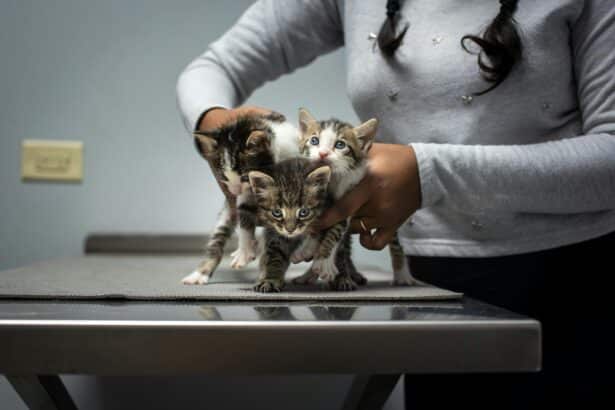Male or female? Here’s how to determine your cat’s gender with confidence—without stress for you or your whiskered sweetheart.
- Why your cat’s gender matters for daily life
- The tail-up test: a gentle, at-home check
- Kittens vs. adults: why age changes what you see
- Spayed or neutered cats: what really changes
- Coat color clues: helpful, but never proof
- Behavior hints and common myths
- Step-by-step: the kindest way to check
- When to call your vet
- Quick recap checklist
- FAQ
Why your cat’s gender matters for daily life
Knowing your cat’s sex helps you understand behavior, anticipate health needs, and plan the right care. Heat cycles, spraying, roaming, even weight and face shape can vary by sex. And yes, it also helps avoid baby-name mix-ups later.
Common mistake to avoid: relying only on behavior. Many females are bold cuddle-monsters and plenty of males are serene couch-potatoes. Anatomy tells the truth; habits don’t.
The tail-up test: a gentle, at-home check
Pick a calm moment, choose good daylight, and let your cat relax. Gently lift the tail or wait for a friendly tail-raise greeting. You’re looking at the area just under the anus.
- Male (intact): Anus on top, then a space, then the scrotum with two small testicles, and lower still the penis sheath. Think “colon” shape (:).
- Male (neutered): Testicles are absent or very small, but there’s still a noticeable gap between anus and penis sheath.
- Female: Anus on top, then a short distance to a vertical slit (vulva). Think “exclamation mark” (!).
Curious why cats so often lift their tail when happy? It’s part of their body language—our guide to tail language helps you read those subtle signals.
What distance tells you (the key difference)
In males, the distance between the anus and the second opening is longer. In females, it’s short and neat. This anogenital distance is the most reliable visual clue, especially in kittens.
Practical tip: Offer a tiny spoon of wet food on the floor. As your cat eats, the tail often rises, giving you a perfect, hands-free view—calm kitty, calm you.
Kittens vs. adults: why age changes what you see
Under about six months, things are smaller and less obvious. Testicles may not be very visible yet, and the slit vs. dot look can be subtle. Comparing two littermates side-by-side helps.
If you’re unsure about age milestones or growth, it’s handy to calculate your cat’s age with a simple method. It makes sexing young kittens much easier.
Spayed or neutered cats: what really changes
Neutered males lose visible testicles, but the longer distance and the penis sheath remain. Spayed females keep the short distance and vertical slit; sometimes there’s a faint midline scar on the belly.
Just welcomed a newly-neutered boy? Our guide to care after neutering helps you support a smooth recovery at home.
Coat color clues: helpful, but never proof
Color can whisper hints, not verdicts. Calico and tortoiseshell patterns are linked to the X chromosome and are almost always female. Orange (ginger) cats are more often male, but not exclusively.
Surprising fact: Male calicos do exist, but they’re rare and often sterile due to unusual genetics (for example, XXY). If your “gentleman” is tricolored, he’s truly exceptional.
Want to learn more about these stunning patterns? Explore the magic of tortoiseshell cats and their unique temperament.
Behavior hints and common myths
- “Males spray, females don’t.” Not always. Neutering reduces spraying; some females may mark too.
- “Females are sweeter.” Personalities vary wildly. Genetics, socialization, and environment matter more.
- “He’s big, so he must be male.” Many girls are solid athletes; size isn’t sex.
For everyday quirks—from shadowing you room to room to bedtime chats—peek at why your cat might follow you everywhere. The reasons are sweeter than you think.
Step-by-step: the kindest way to check
- Choose a calm time and use natural light or a soft flashlight.
- Let your cat sniff your hand, then gently raise the tail or wait for a social tail lift.
- Look for the openings’ shape and the distance between them.
- Take a quick photo if needed and compare with a reliable diagram later.
Mistake to avoid: pressing on the area to “make something appear.” It’s uncomfortable and unnecessary. A clear look is all you need.
When to call your vet
If you’re still uncertain, there’s no shame in asking. Vets confirm sex in seconds and can spot medical issues. One example is cryptorchidism (undescended testicle), which may need surgery in males.
Also ask about the right timing for sterilization, microchipping, and preventive care during your visit. It’s the perfect moment to set your feline up for a long, healthy life.
Quick recap checklist
- Male: dot-like opening, longer distance, possible scrotum/testicles, penis sheath lower down.
- Female: vertical slit, short distance, no scrotum.
- Color hints: calico/tortoiseshell = almost always female; ginger = often male.
- Kittens: compare littermates and focus on distance; be patient.
- Neutered/spayed: same distance and opening shapes still apply.
Still choosing between a tom or a queen for your family? This guide on male or female cats can help you decide based on lifestyle, not clichés.
FAQ
How can I tell my kitten’s gender at home?
Lift the tail and check the anogenital distance. Males have a longer gap and a dot-like opening; females have a short gap and a vertical slit. Compare littermates if unsure.
Can a neutered male cat still look like a female?
Testicles may no longer be visible, but the distance remains longer in males. Look for the penis sheath below the anus; it confirms male anatomy.
Are all calico cats female?
Almost all are. Rare male calicos occur due to unusual genetics and are often sterile. Color is a good hint, but always confirm via anatomy.
Should I ask my vet to confirm my cat’s sex?
Yes if you’re unsure, especially with young kittens or possible medical issues like cryptorchidism. A quick check avoids confusion and guides proper care.







